Challenges for the world's first "super-aged society" ―The design of Japan in 2040 as seen by KGRI―
Challenges for the world's first "super-aged society" ―The design of Japan in 2040 as seen by KGRI―
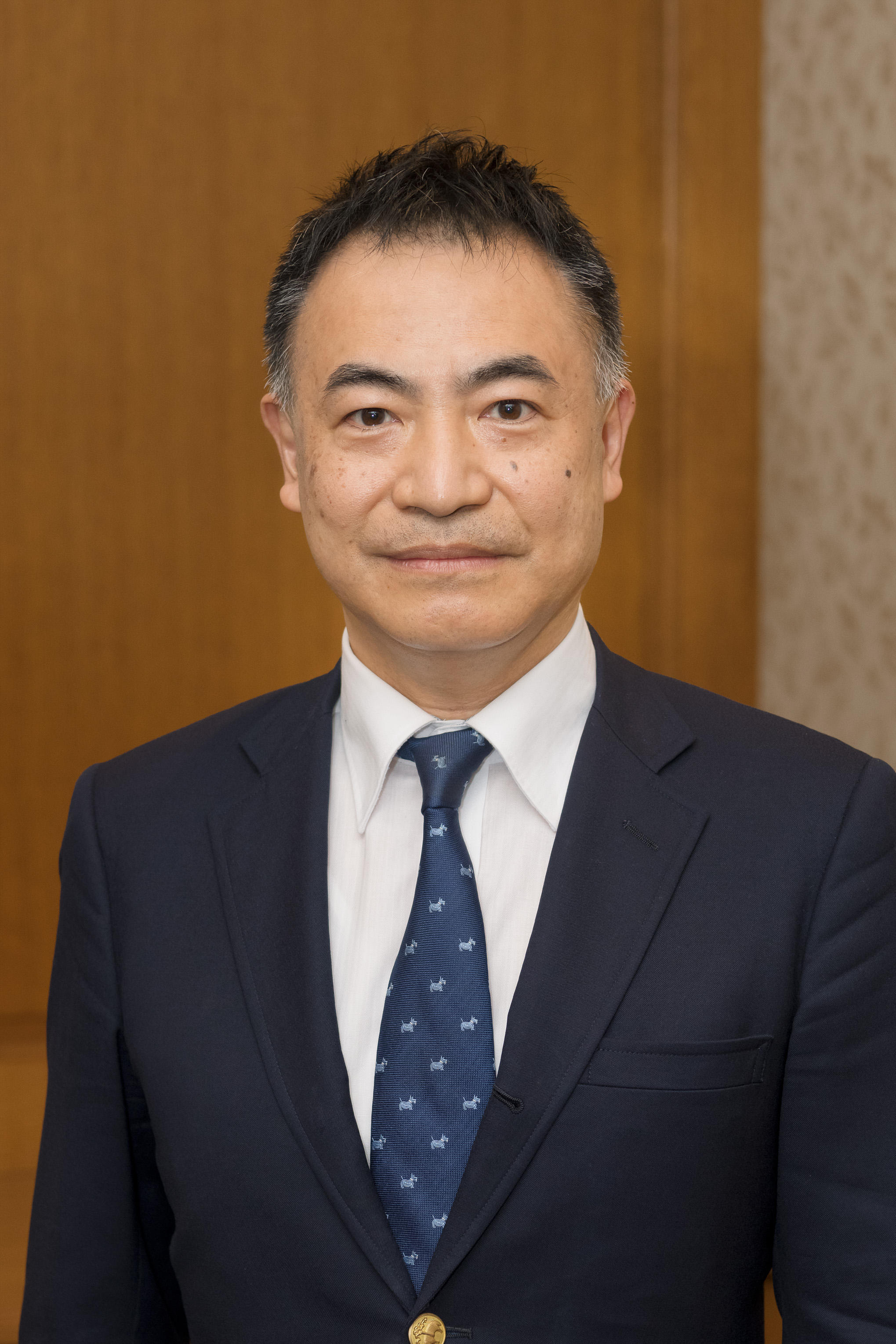
Masato Yasui (Director of KGRI; Professor, School of Medicine)
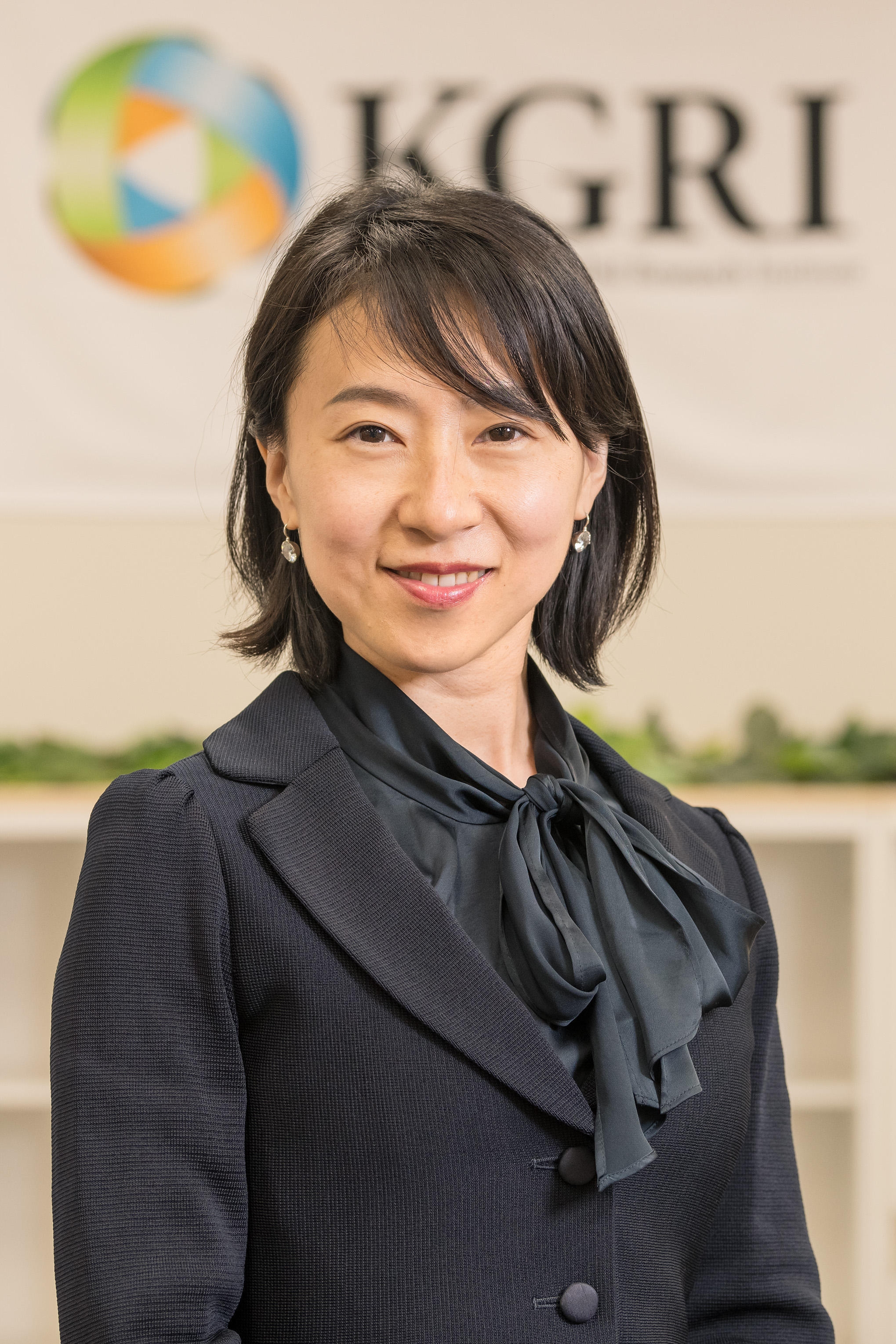
Masako Toriya (Sub-leader of the "Extending Healthy Life Expectancy Project", Project Professor, KGRI)
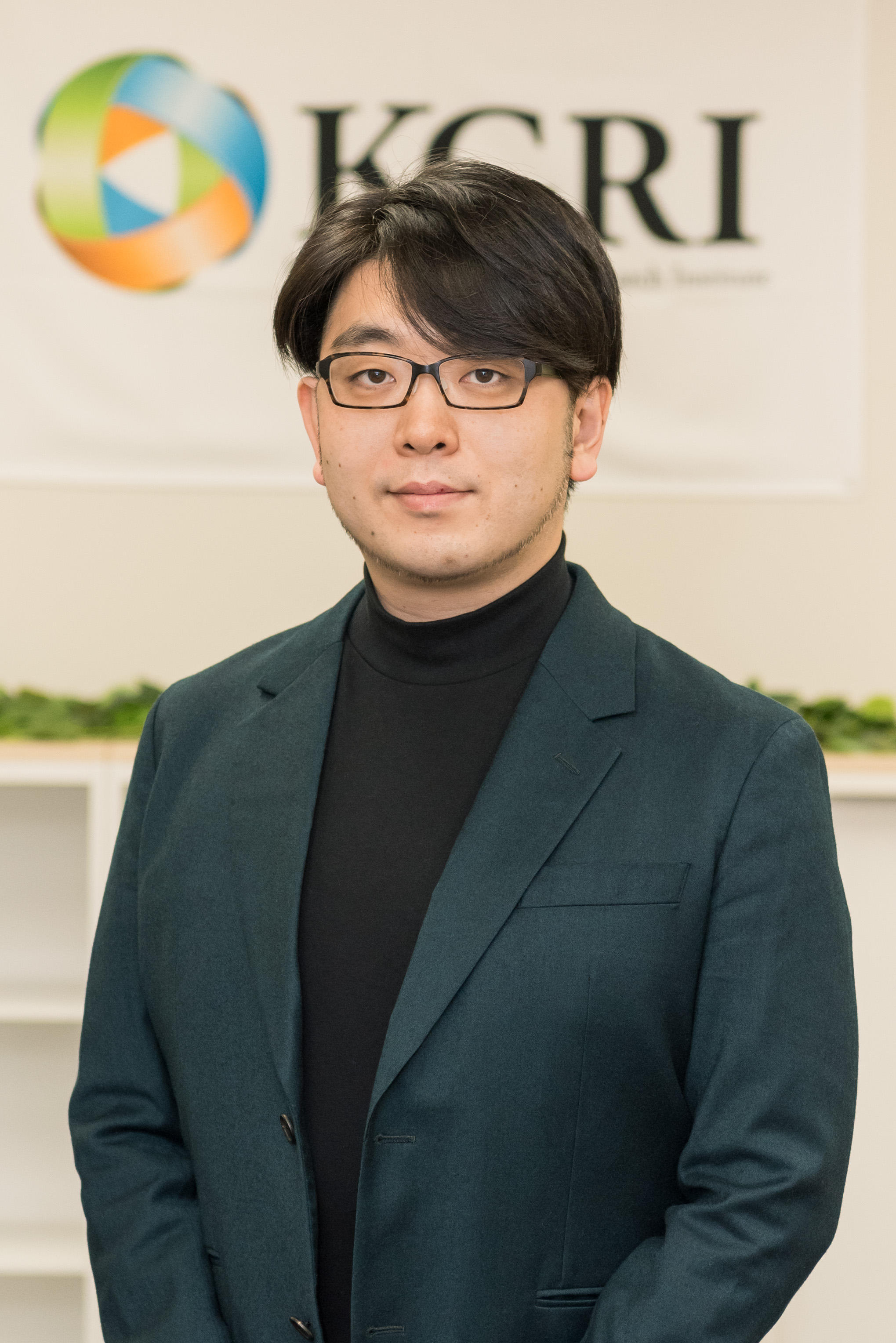
Makoto Asai (Sub-leader of the "Revolutionary & Interdisciplinary Soft Matter Integration Project", Project Professor, KGRI)
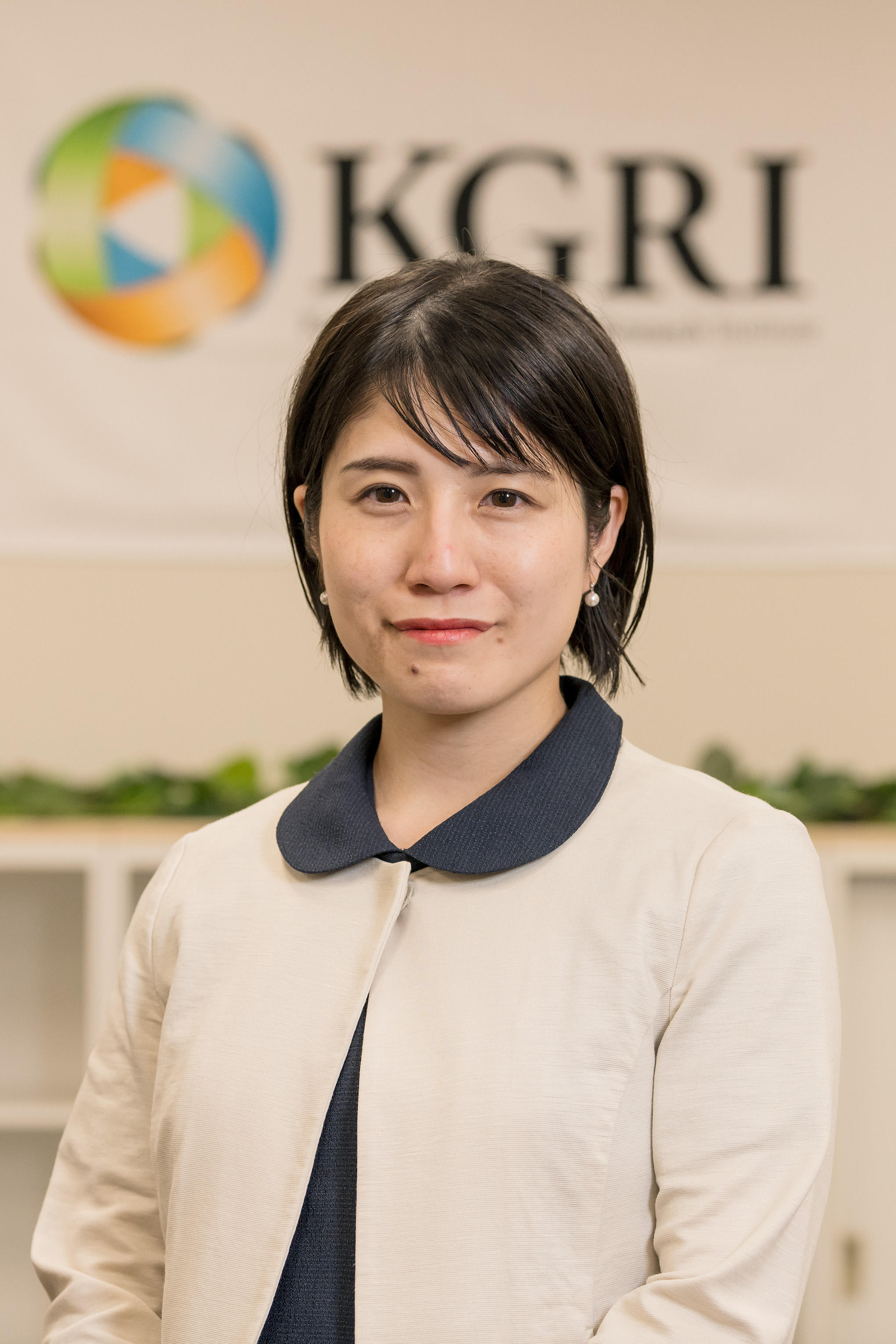
Haluna Kawashima (Sub-leader of the "Platforms and the '2040 Problem' Project", Project Associate Professor, KGRI)
Yasui: Keio University currently has 10 undergraduate faculties and 14 graduate schools. As learning progresses, specializations increase more and more and exchange across the faculties and graduate schools become infrequent. One of the missions of the Keio University Global Research Institute (KGRI), which was established in 2016, is to overcome this issue and spur communication.
It is also a place where we adopt an interdisciplinary and global approach to tackling social issues while taking the initiative to implement the spirit of practical learning as advocated by Yukichi Fukuzawa, the founder of Keio University, by "contributing to society through academic achievements."
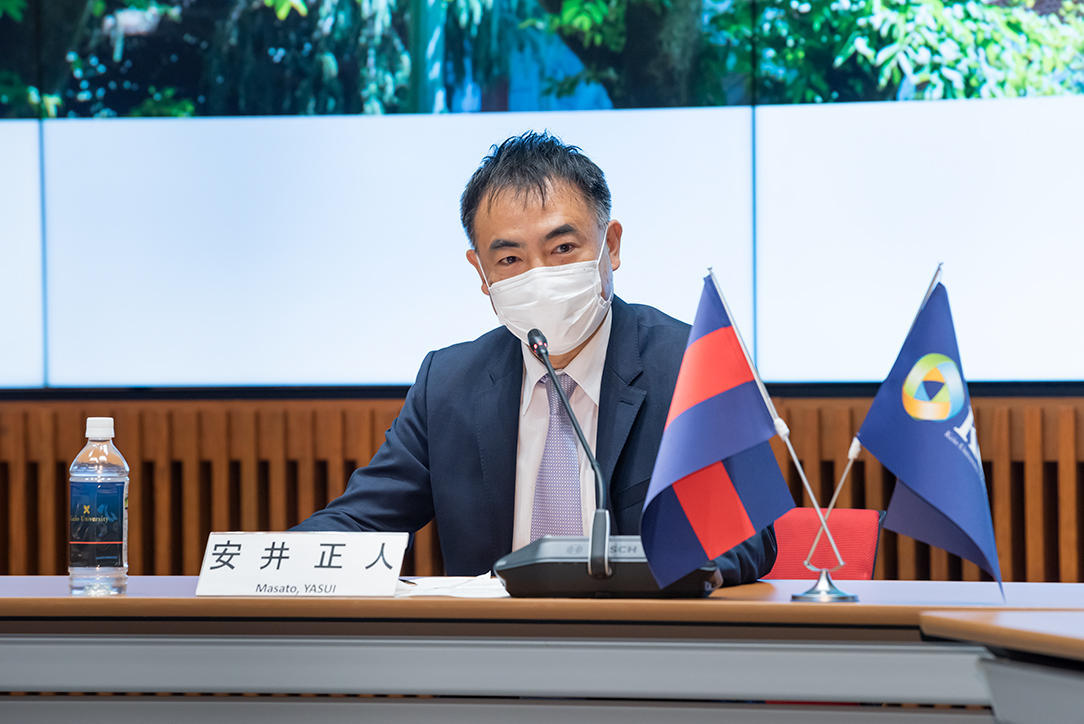
Up to the 2020 academic year, KGRI promoted research under the 3 initiatives of Longevity, Security, and Creativity as our core projects. Based on what was accomplished through this, in April 2021, we launched "Research Project Keio 2040" as the post-core projects project.
Even among the many existing social issues, I believe that the 2040 issue is the most serious and pivotal one. In 2040, Japan will become a super-aged society. The world is watching Japan to see how the country will overcome this crisis as a front-runner in facing a super-aged society. Therefore, we have welcomed three new KGRI project professors and project associate professor with the aim of bringing together Keio University faculty members, researchers, and students to face the 2040 issue head on and reexamine what independence and self-respect should entail and how this could be realized. They are Project Professor Masako Toriya, Project Professor Makoto Asai, and Project Associate Professor Haluna Kawashima. I would like to ask the three faculty members to each give an overview of the project that they will promote their thoughts on "Research Project Keio 2040."
First, let's hear from Dr. Toriya, who is promoting the "Extending Healthy Life Expectancy Project," which is one of the three pillars of Research Project Keio 2040.
"System × Design thinking" that drives emergence from a comprehensive viewpoint and through empathy
Toriya: The "Extending Healthy Life Expectancy Project" aims to create social systems and services for realizing healthy lifestyles and manners of working by 2040, when we will be a super-aged society. Therefore, we will use the "system design" method to consider the structure of society in 2040, the issues that will emerge as that year approaches, and the systems and services that will be needed.
Technological development is obviously required for the realization of new systems and services, and it is also important to consider the connections between each technology. Of further importance is the economic perspective. To maintain international competitiveness in a super-aged society, in addition to being healthy, it is also necessary to make economic contributions to society. We must also think about whether systems and services created from ideal frameworks can be sustained as businesses. The creation of a new social system also involves changes in politics and governance.
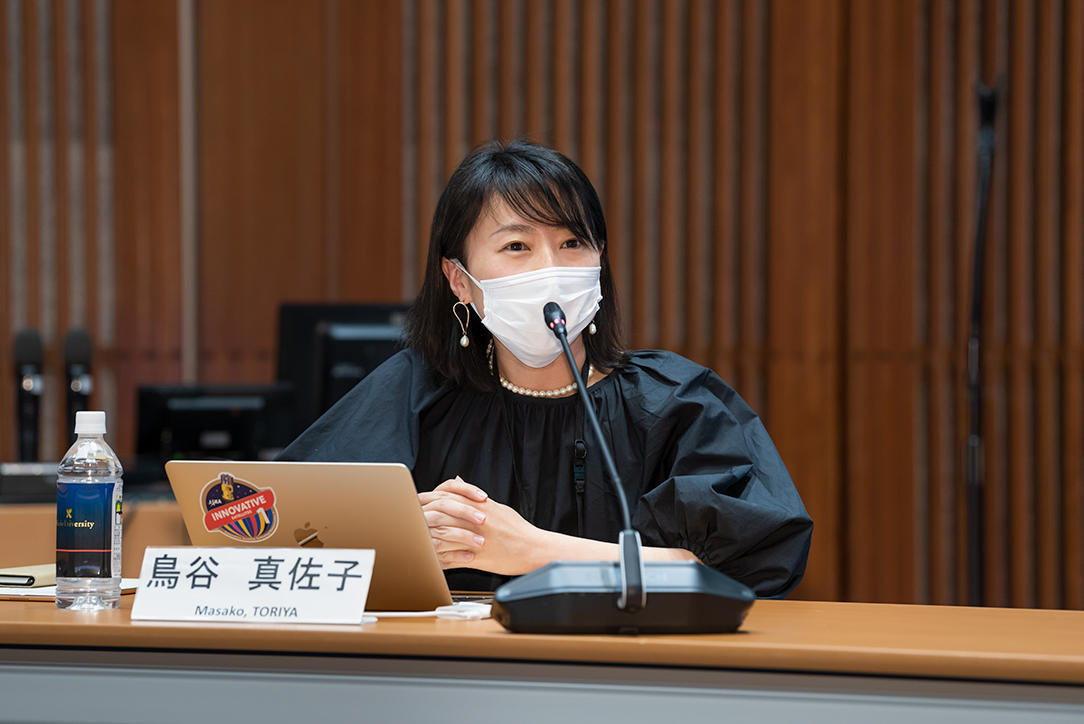
It is necessary to comprehensively understand the relationships that are complexly linked in this way, while at the same time, we must design specific systems for each individual subcomponent and connect these to what is actually being developed. The scope of what needs to be covered may seem too broad and complicated for progress to be made. This is where "System x Design Thinking," which I used to research and teach in my previous post at the Graduate School of System Design and Management (SDM), is used. "System x Design Thinking" is an approach to thinking that is unique to Keio University and combines design thinking, a human-centered approach emphasizing empathy with the subjects of research, with system thinking that captures matters systematically and from a comprehensive viewpoint using methods. By utilizing "System x Design Thinking," we will design social systems that are ideal for 2040.
Of course, existing mechanisms do not easily change, and there are various barriers. I would like to first find an entry point that will be easy to penetrate and then redesign the mechanism or service in pieces, while gradually expanding out to the whole. At first, we will think about each part while being conscious of the grand design, but we must not only think about individual parts at this stage. We hope to create a state of "emergence" in which the necessary parts are in the appropriate places and function in harmony with one another, demonstrating their value for the first time. Of course, we cannot do this alone and hence need the cooperation of various experts, companies, and local governments as well. This "gathering of collaborators" is very important. If we proceed as things currently are, we will be in a difficult situation when we reach 2040. However, not everyone views this problem as something that concerns them at present. But if we do not act now, the situation will not improve. We want people to think with us about what we can all do right now.
Even if we continuously speak in serious words about the issue, people will not come together. That's why we're talking about creating new media for making friends while finding joy in learning. We envisage a space in which people can participate naturally, one where new discoveries can be made just as easily as listening to the radio, or one where people can start speaking before they know it. I'm talking with designers and writers, and I've already had some conversations involving ideas that researchers wouldn't think of on their own. I get the feeling that something is likely to happen because of these encounters with completely different fields. It would be nice if even more students were to join so that we could incorporate their unique and fresh perspectives too.
Yasui: Thank you very much. Next, I would like to talk to Dr. Asai on the "Revolutionary & Interdisciplinary Soft Matter Integration Project."
The potential of Soft Matter: the dream of biological and mechanical integration
Asai: In our project, we will consider how to approach the 2040 issue from the side of technology. As Japan becomes a super-aged society ahead of the rest of the world, how to maintain the social system itself will be a national problem. When considering how to grasp this problem from the technological side, we use the key phrase "extending healthy life expectancy." We will consider how to technologically realize a society in which people can live long lives in good health.
In today's society, healthcare fields that utilize IoT are an example of technology that supports the extension of healthy life expectancy. A variety of inexpensive devices for monitoring your body that can be easily worn are already available on the market. From venture firms to major corporations, all are fiercely competing around the world in order to win out in the so-called "red ocean."
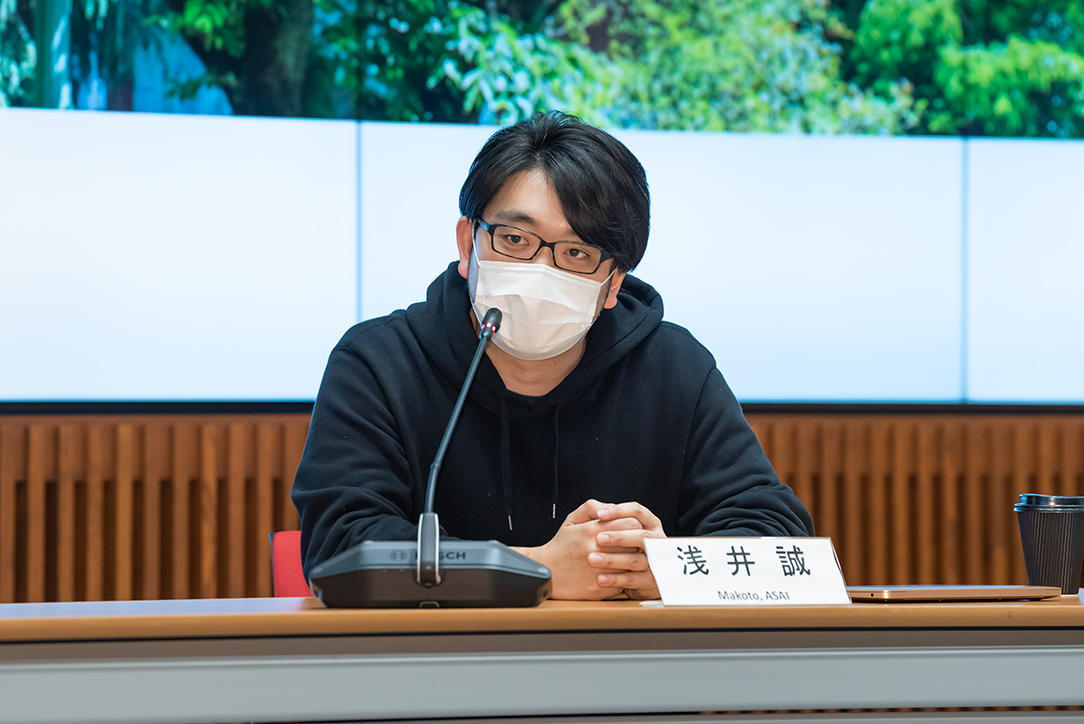
Against such a backdrop, we considered what new technologies would be necessary to achieve our aim of extending healthy life expectancy. The devices I just mentioned are all based on metals and semiconductors. It is practically impossible to incorporate these directly into or integrate them with the body, and we came to the conclusion that there is a major barrier here. Furthermore, I believe that the next breakthrough to be made will be in how the technologies developed over the course of the 20th and 21st centuries through science, which may be described as the fruits of solid-state physics, will be incorporated into the phenomenon of life via new technologies. "Soft Matter" is attracting attention as the technology to realize this.
Conventional hard materials, such as metals and semiconductors, are called Hard Matter in our world. However, if we broaden our perspective and look at the natural world, a variety of life forms, such as plants and animals, are not made of Hard Matter. Life forms spontaneously produce materials that are made of carbon atoms bonded together like a rosary, such as DNA, proteins, and macromolecules. These are collectively termed Soft Matter. The natural world creates the material world by making skillful use of Soft Matter, and through the relatively new academic disciplines of Soft Matter engineering and Soft Matter physics, the principles governing the material world of Soft Matter are being explored. By making use of the knowledge gained from these academic fields, we believe that we will be able to take the technologies we currently enjoy, which make use of traditional Hard Matter, and integrate them naturally with or incorporate them into our bodies so that they can be used as a part of our biological system.
To think about how to make progress in the challenging field of Soft Matter worldwide as a project, it is important to take a backward-looking perspective that takes the future as its starting point regarding the 2040 issue, which is a major social concern. In terms of integrating organisms and machines, there are likely many things that will not be achieved over a span of several years to a decade. However, when thinking about society in 2040 and beyond, we as scientists must seriously discuss now the issues that are dreamed up in the world of science fiction and lay out the path to their realization. Focusing on this issue that excites us as scientists, the Revolutionary & Interdisciplinary Soft Matter Integration Project, commonly known as the "RISΣ (Rise)" project, was set up by gathering people working to integrate various fields, including medicine, materials engineering, and robotics. The acronym RISΣ comes from the first letters of "Revolutionary," "Interdisciplinary," "Soft," and "Integration" in the English title of the project name. The final word, "Integration," begins with an "I," but in the acronym, we use the sigma symbol (Σ) instead, which is like the shape of the letter E. The word "integration" here incorporates the meaning of various talents gathering and working together, and the sigma symbol is used to represent the "summation" of a sequence. Also, the word "rise" has the meaning of "standing up to" something. This phrase evokes the image of young researchers having a sense of crisis regarding national social issues and standing up to these challenges to make the necessary changes for the future.
I have used the negative expression of a "national crisis" here, but conversely, as Dr. Toriya also mentioned earlier, I would like to look at this as an opportunity to make the project into one that can propose a world that looks enjoyable. Researchers shouldn't just be engaged in difficult work in some building somewhere. It is necessary for researchers themselves to go out into society, share the future that they envision with the general public, communicate with them, and sometimes change their thinking based on the feedback they receive, all while having an impact on society. I would like to involve a diverse range of people and engage in the project through a process of integration.
Yasui: Next, I will pass over to Ms. Kawashima, who is promoting the third project, "Platforms and '2040 Problem'."
The potential and challenges of platforms and the role of the law
Kawashima: This project looks at independence and self-respect and the 2040 problem from the perspective of law and political science. If we try to identify what is most problematic from a legal perspective, I believe it is the fact that it will be a society that safeguards what any given individual would consider to be good, regardless of who he or she is, which will become desirable hereafter, not a society that generically makes good things for "everyone." In the field of medical care, what is called personalized medicine may be close to this. Isn't the call for technologies and systems that respond to the needs of richly diverse societies connected to the philosophy of independence and self-respect, which emphasizes the dignity of the individual?
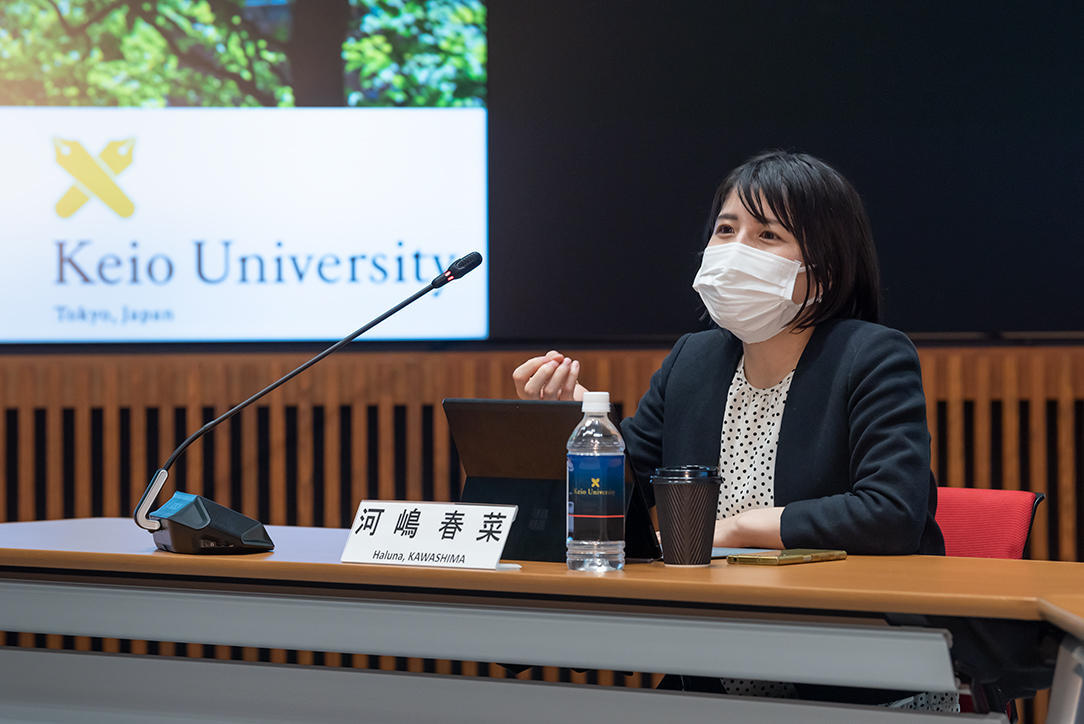
In 2040, it is said that people whose circumstances leave them in a position in which they are unable to preserve their dignity, such as the elderly and vulnerable individuals who from the outset lacked a means to be independent, will become more apparent. One of the solutions for this that has been presented is "platforms" such as social media and online news sites. Through these platforms, it is becoming possible to give consideration to individuals in a way that could not be done in physical space. To be a little more specific, thanks to social media, for example, people who did not have the courage to speak out on political matters until now have come to be able to do so. A typical example of this is the "Arab Spring." Many people came together through social media to convey their political opinions, both domestically and internationally, leading to the overthrow of regimes. Even in the field of health care, by collecting lifestyle habits through apps and devices, it has become possible to receive medical care and nursing care services that suit our individual needs. In this way, we are proposing that these platforms will be a light in various aspects of our lives.
However, there is a dark side to these platforms. In the case of social media, there are instances where the speech environment is controlled, such as through the deletion of posts and banning (freezing) of accounts based on the arbitrary criteria of the platform providers. There are also concerns that the platforms that operate across borders may be providing user data to foreign governments. Nevertheless, there are as yet no comprehensive rules regarding platforms to be found anywhere in the world.
Therefore, in this project, we would like to make basic considerations and proposals for the creation of rules that will maximize the brighter features offered by these platforms and reduce their darker aspects as much as possible. For example, because traditional platforms have expanded into a variety of fields from medical care to finance as we can see in the case of GAFA (Google, Apple, Facebook, Amazon), rather than a vertical division of rules, we need to think about rulemaking in a different way. We must also consider who will make the rules: countries, platform providers, or users. Of course, we must also take into account the individual circumstances of each area. Since this project covers an extremely large domain, I think it is essential to collaborate with everyone who develops the various technologies we have by integrating the humanities and sciences as well as with people who create health care-related systems.
Specifically, we plan to collaborate with platform providers and foreign researchers, and in the process, we will think in tandem with students. As part of this, we are already holding an endowed course ("The Platform Economy and the Sustainable Society") in the 2021 academic year. And of course, we are also discussing about conducting research with the other two pillar projects.
Yasui: I think that we can see that interdisciplinary efforts and collaborative research have already begun to take place in each project.
Could you tell us a little more about your ideas and specific plans for organically linking these three projects and developing the larger "Research Project Keio 2040?"
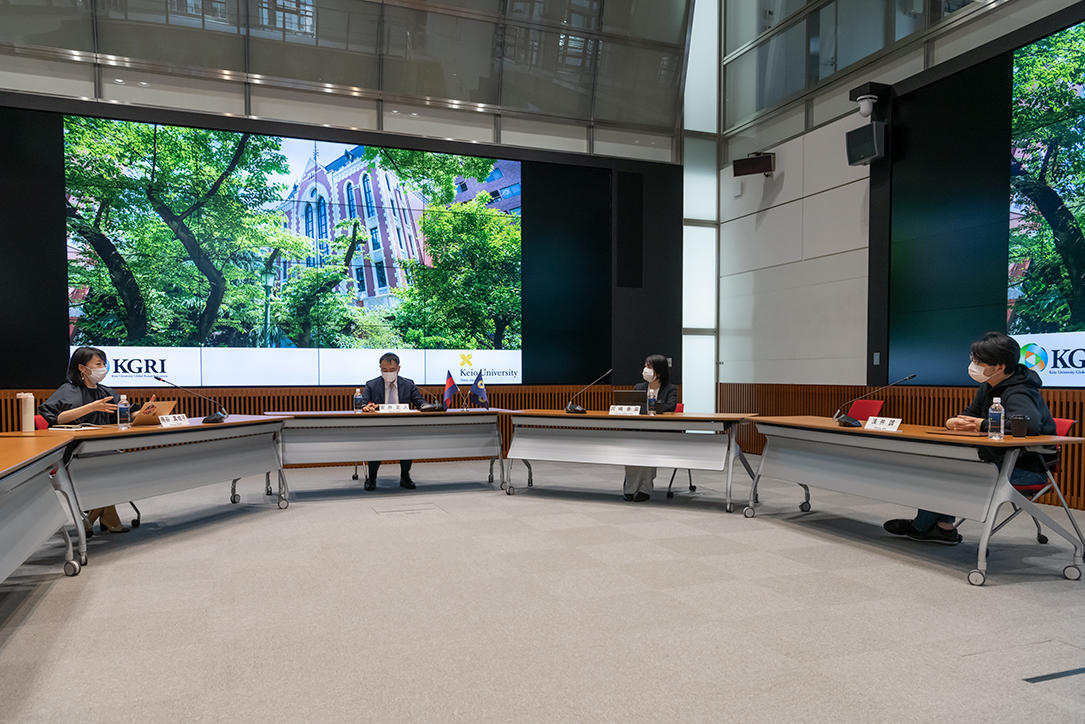
Visualizing biases and having dialogues in diverse circumstances
Asai: If each of the three projects focuses only on short-term goals, they will naturally each end up taking a separate course. When considering how to integrate the three projects, I think it is necessary for everyone to digest the name of the project that encompasses these individual projects, that is, "Research Project Keio 2040."
What is interesting about this project is that it seeks to tackle a major social issue that could more or less involve anyone in the world. The advent of a super-aged society is a social issue that will affect everyone living on earth. It is important to work in reverse from this major social issue and share the fact that these three projects have been launched with everyone involved. In doing so, I believe that a common awareness will be created where what is discussed daily in each project will ultimately circle back to the same goal.
How we will proceed is yet undecided, but one thing we could do is to disseminate information through new media like Dr. Toriya mentioned earlier. I believe that by being aware that we are delivering a message that maps out such a future to a diverse audience, everyone will be able to see this big goal as their own.
Yasui: As research becomes increasingly fragmented and specialized, it seems easy but is in fact surprisingly difficult to grasp overall designs and systematic ways of thinking. Dr. Toriya, what is your strategy around this?
Toriya: When considering a very complex problem, it is of vital importance to look at it from various perspectives. Each specialism has its own biases; thus, one academic field can only address the problem from one perspective. Therefore, I believe that by bringing together each of these individual biases, we will see the overall picture. In addition, visualization is also important. Systems engineering has evolved in such a way that when designs are being created with people from diverse backgrounds, it allows ideas to be communicated through diagrams drawn under common rules, thereby enabling concepts and details to be shared. You can control the degree of abstraction by grasping and then visualizing the big picture. You can draw a rough sketch of the whole thing, or if you want more details, you can zoom in and get a closer view. I believe that if we have an overall picture and details, and furthermore, can create a clear picture of the relationship between the whole and the details, then it will be easier for each of us to provide our own expertise in order to create something unified.
Yasui: As Ms. Kawashima mentioned, it is extremely important for each person to think of a society that is good for each and every individual as something that affects him/herself. What are the key points to realizing such a society from a legal point of view?
Kawashima:
What we must remember is that a nation is created by each of its individual members. The constitution is imbued with a basic principle of respect for individuals, or, in other words, the importance of the individual. In this sense, the members of this project are really embodying diversity from the start. In addition to academic diversity through the arts and sciences, this project includes numerous researchers from various backgrounds who are at different stages of their lives and research. Take myself for example, I am currently pregnant. I believe that such a research system is very beneficial for conducting research that makes proposals to society that does not overlooking any individual.
In addition, the students of Keio University are full of energy, and I feel that there is confidence on the part of the faculty members that the students will absolutely make the most of opportunities if they are given the chance. Since this is a study to create a society for everyone, I think it is also important for a diverse range of people to be involved in the project itself.
Yasui: The term "learning while teaching, teaching while learning" is used at Keio University. The idea is to learn from each other and teach one another. In considering how to proceed with Research Project Keio 2040 going forward, I think the point of "how to incorporate the abilities of young people," which Ms. Kawashima just mentioned, will be very important. What kind of developments are needed to make the project attractive from the perspective of young people?
Social change brought about by student empathy and participation
Asai: In the case of the faculty members involved, we encourage the students in their laboratories to actively participate. In this way, the project has been designed to involve many students from the start, but doing just this means that only those directly connected with the research will be able to participate.
Here, we will consider the 2040 issue from a broader perspective. In 2040, which is 20 years from now, the university students of today will be around the age of 40. They will still have to play an active role in society, but by then, the population decline may mean that society could be coming apart at the seams. This sense of crisis should, of course, be felt by them as their own.
Therefore, I would like to encourage participation in this project by communicating to a wide audience what we are aiming to do in a very simple and short manner, through a one-minute description of our activities. This not only applies to faculty members and researchers, but also of course to students too. Doing this successfully will depend on our ability to properly convey our philosophy in words.
Yasui: That connects exactly with what Dr. Toriya was saying when she said that design is about empathy. I think that it is the case that even if people can understand in theory something that will occur in 20 years' time, it would be difficult for them to associate such issues as being relevant to them, so I wonder how we can garner the empathy of young people and design the future together. What do you think about this, Dr. Toriya?
The challenges for KGRI: from encounters and discoveries to the realization of issues
Toriya: To empathize, you need to both think about and know the object of this empathy. When it comes to this, it may be difficult for students in their twenties right now to empathize with the lives of the elderly. On the other hand, the fresh perspective of students can be very useful when solving some difficult problems. I think we can get them involved in discovering points of entry, perspectives, and eureka moments that people in their 30s to 60s would perhaps never have come up with. For example, the world's largest international furniture trade fair held in Milan every year (Salone Internazionale del Mobile di Milano/Design Week) is a festival where companies and designers from around the world gather not only to exhibit furniture, but also present new conceptual products that are several steps ahead of the times. Until now, SDM has planned and exhibited products aimed at solving social issues using the ideas of various students. When they are involved, many ideas unique to students emerge. For this project, which we are currently conducting in collaboration with SDM, we are talking about how great it would be if we could work with students to plan and exhibit products aimed at resolving necessary health care issues that will emerge in the super-aged society in anticipation of 2040.
Of course, we can also hear the actual impressions of people from overseas and it is extremely interesting because the way some people feel about certain things are unexpected to Japanese people. I would also like to have students studying science and technology as well as medicine to participate and think about services and products that will solve some of the social issues from the students' point of view. Regarding the products and mechanisms that emerge from this, we would like to consider where they should be positioned within the overall system of the project we are in charge of, and furthermore, consider how we can draw out more value for these when taken as part of the whole system than could be done individually.
Yasui: It is very important for young people to think of issues as if it affects them, and if there is an international arena where they can express their thoughts, display their creations, and have them evaluated, I think their motivation will also increase greatly. I hope that through this project, we will be able to increase the number of opportunities for students to become actively involved.
Finally, I would like to ask about your thoughts on this project and for a message.
Asai: If I look back on my past experiences, there has never been anything like this project. In particular, I believe that it is unprecedented for relatively young researchers in the early-stages of their careers to be given this level of flexibility and be provided with a free environment within KGRI, an establishment that is almost like a special zone. Moving forward, I would very much like to make impacts on society that will lead to real change.
Kawashima: I feel as though this project is off to a very good start. I have been exchanging opinions with Dr. Asai and Dr. Toriya every day, and I'm already excited about what I can do moving forward. While my research will begin to take a concrete form from now, I hope to make new discoveries and take on new challenges as I advance research working together with students and companies. I am looking forward to working with everyone.
Toriya: Because we are trying to consider extremely big issues, mechanisms, and systems, we need people from various fields and age groups to be involved. While it is difficult, I think it is very challenging and meaningful, and it is a great honor to have been given such an opportunity. Moving forward, I would like to show that we can not only talk about ideals, but also concretely manifest these.
Yasui: Thank you everyone. I have experienced that encounters are a very important first step. I believe that we are stimulated through encounters and that they bring great opportunities for growth. I hope that KGRI will create such opportunities and environments while developing into a more attractive research institute. Young people, in particular, will gather in attractive places. Therefore, I would like KGRI to be a research institute that will communicate more and more through research and education. Thank you for participating today.
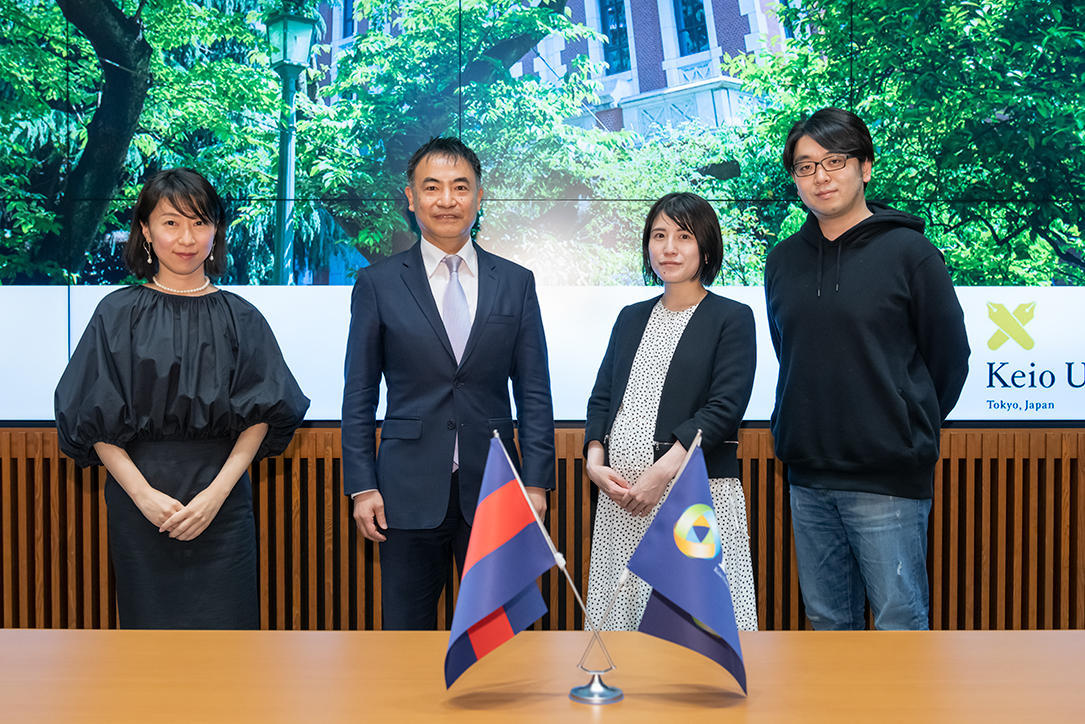
Photo: Takeshi Kishi





